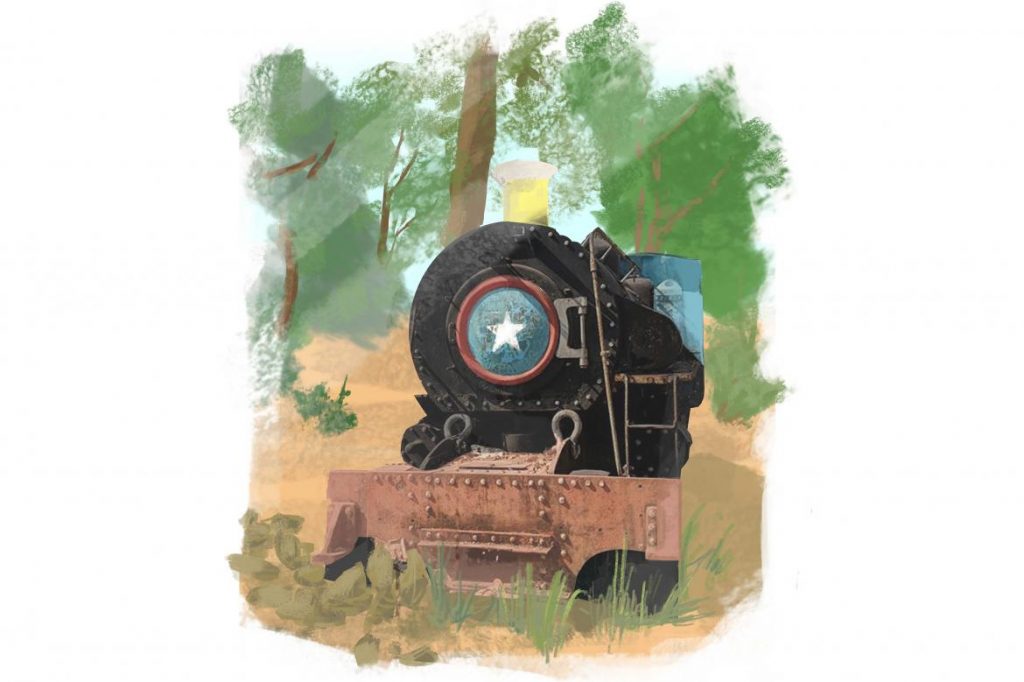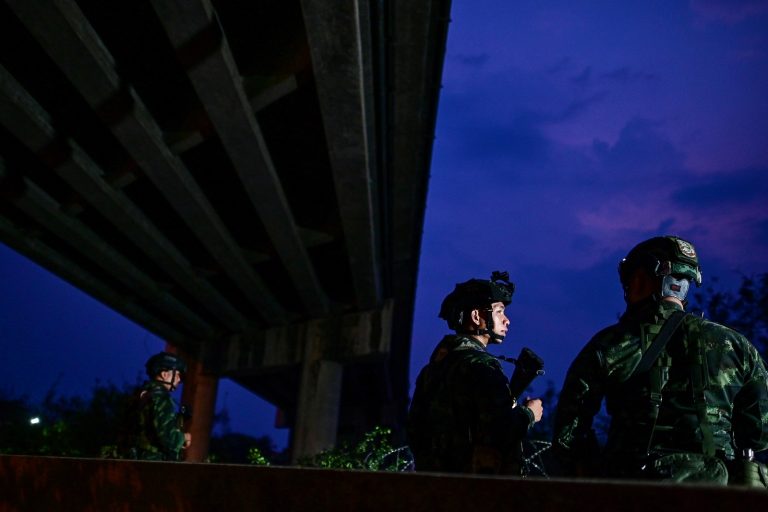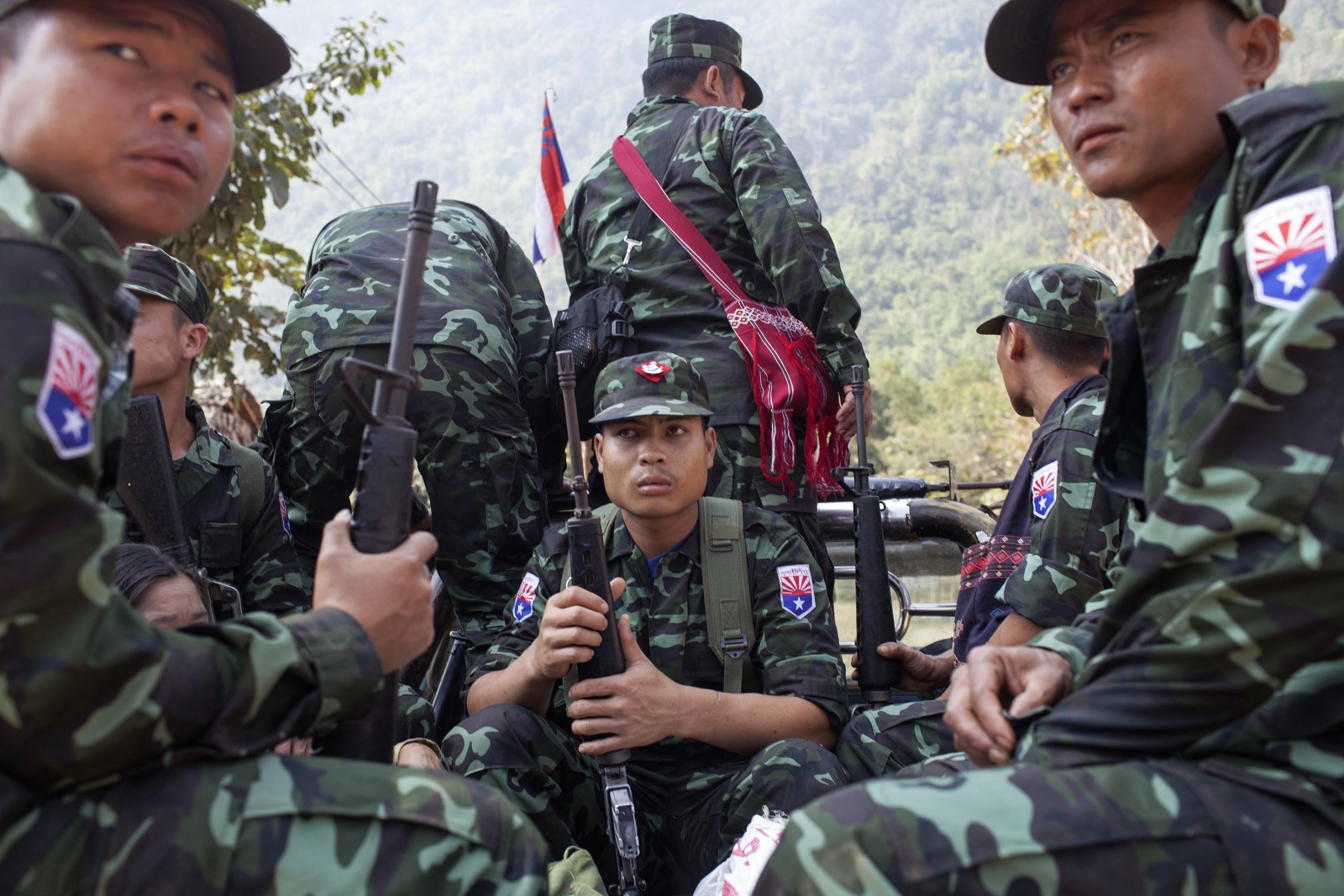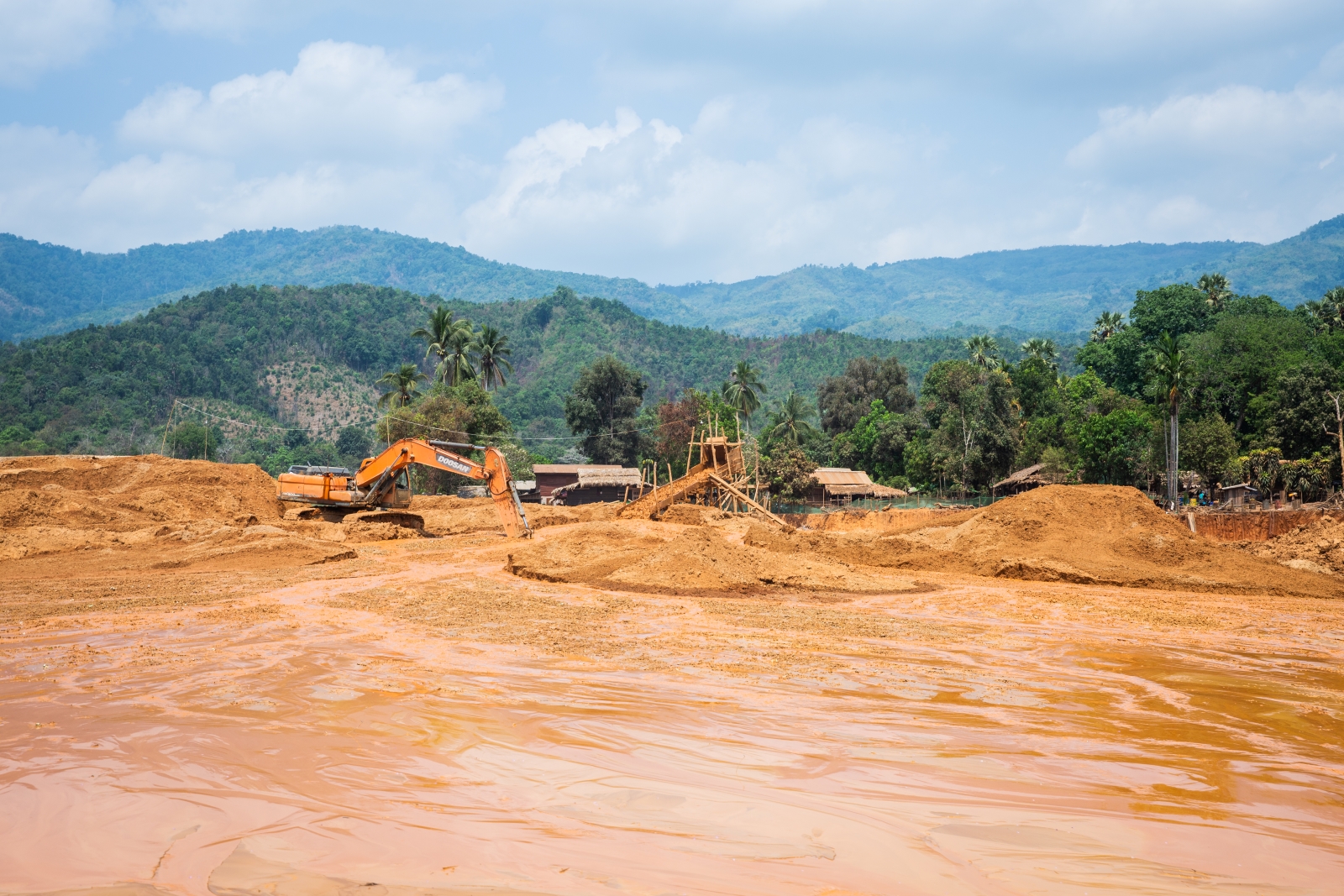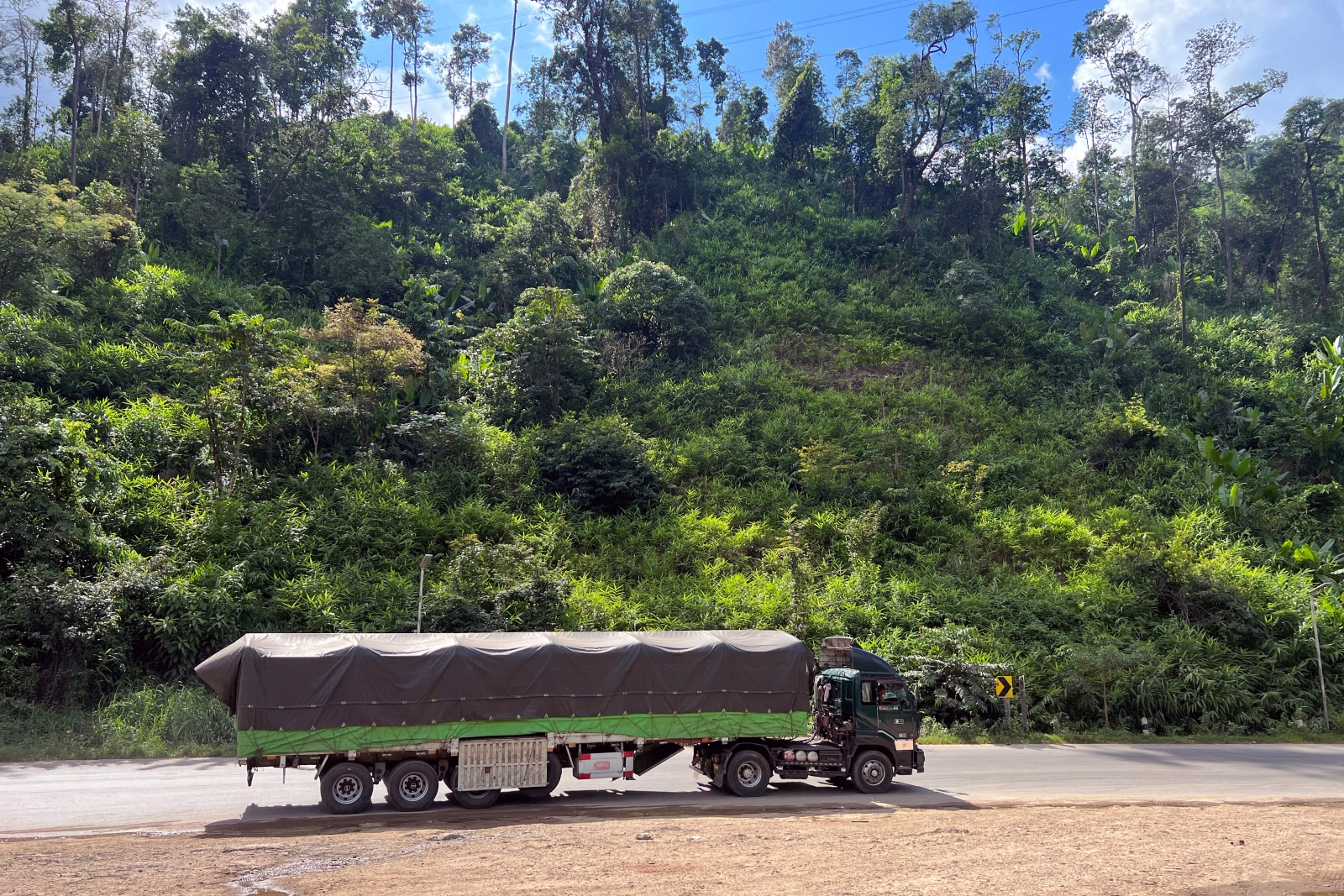A journey through railway history on the Thai border.
By JARED DOWNING | FRONTIER
I FOUND a really neat train in 2014. I had been hitchhiking to the Thai border, and about midday, somewhere past the Salween River, a freight truck dropped me off in a village with a steam locomotive rusting in the weeds.
It was blue, black and red with a white star on the nose, sort of like Captain America’s shield, and it had been there 100 years, insisted my guide, an older man who met me on the highway and gave me a tour of the village, its pagoda and monastery and finally—the man could barely contain his excitement—the oldest train I had ever seen.
I took some photos and moved on. But even after I took a job here and the exotic aura of the Golden Land faded into expat mundanity, the train stayed stuck in my image of Myanmar like a glass bottle grown into an old tree.
A photo of it ended up on my wall, and whenever wrote about something in the general area, I would find myself scanning the highway on Google Maps and spinning elaborate, private mythology about the life and times of that little blue engine.
Support more independent journalism like this. Sign up to be a Frontier member.
Finally — equipped with a 400cc Honda Steed, my Myanmar-speaking friend Evelyn and a free weekend — I got ready to solve the mystery.
It didn’t take long. A preliminary Google search revealed a whole community of Southeast Asian train spotters who gush about routes and schedules on Geocities-era HTML blogs. Apparently Myanma Railways ran steam trains until 2008, and one company, FarRail Tours, actually acquired and restored a few engines.
The founder, a German named Bernd Seiler, knew my train at first glance: It was ST 778, built in 1949 and abandoned at the village of Mokpalin, just across the Salween River.
Mystery solved, I guess.
We still took the bike down, of course, and saw at the pylons of the old Sittang Bridge, which the British blew to slow the Japanese advance to Rangoon, and the rustic riverside Mon village. Finally, a shade tree bicycle mechanic showed us to old train depot, and there it was, the blue and black engine, still rusting in the weeds.
It was pretty, but wasn’t exactly the same anymore. Now it was engine ST 778, built in 1949, and a new tourist attraction. Only a month prior, the mechanic said, a big group of foreigners had come by rail (likely the FarRail tour) had stopped in for photos.
One other thing was different: The old man was dead, the one I had met in 2014. The bicycle repair man recognised him from one of my photos and said he had passed away just two months prior.
That caught me off guard. I had sort of expected time to leave the man and his village as untouched as the train itself, at least until I had a chance to come back. I realised I hadn’t even gotten his name. It was U Win Ko, our guide said, and he had actually operated steam engines back when Mokepalin was a bustling depot. The locos were his pride and passion, and he watched them gradually vanish until only ST 778 was left. Then he drank himself to death.
At least, I guess, he would have been happy to know I had thought about his train for so long. And I’m sure he would have been glad to meet Evelyn, who scurried all inside and around the train, fiddling with every little hatch and rusty lever and not caring at all that she already knew it was made and where it came from. It was a brand new mystery for her, and it would probably never be solved.


